Or who are these oddballs anyways?
So, DUELIST NEXUS, the first Core Booster Set of Series 12for the Yu-Gi-Oh! Official Card Game, introduces the new Type 幻想魔 (Gensouma), literally “Illusion Magic”, that we’re tentatively translating as Illusionist.
Since it’s reveal, a number of people have complained this is a type that seems to be the Diet Soda version of Spellcasters. Well. This isn’t entirely wrong, as the Type’s history does call back to Spellcasters, all the way back to the 8th volume of the original manga, from Chapter 62, near the back end of Yugi’s Duel with Pegasus via a magic infused VHS Tape (for our younger readers, this is basically the ancestor of the DVD or Blu-Ray), so let’s rundown where it actually showed up…
DAYS LONG AGO
It basically explains in this chapter that “Magic & Wizards”, what the card game played in the original manga was called, was not a game where just your raw stats decided things, but also what Attribute your monster or magical entity has can heavily dictate the flow of the Duel.
The image above refers to the alignment chart of essentially magical entities, which was arranged into an advantage wheel of:
黒魔族 Kuromazoku (Black Magic Type) which covered “Dark Magician”, “Saggi the Dark Clown” and Dark Knight-Type that includes “Gaia the Fierce Knight”.
白魔族 Shiromazoku (White Magic Type) which covered “Mystical Elf”, “Rogue Doll” and White Magicians.
悪魔族 Akumazoku (Wicked Magic Type) which covered the entirety of Undead monsters (i.e. Zombies) as well as Summoned Skull.
And finally 幻想魔 Gensoumazoku (Illusion Magic Type) which covered Illusionist Faceless Mage.
The basic advantage wheel is Black Magic beats White Magic beats Fiends beats Illusion Magic beats Black Magic.
The main crux of the Duel is that Yugi specialized in Black Magic and Fiend monsters, and to counter him on this attribute wheel, Pegasus used Illusion and White Magic monsters to press the young hero and his alternate persona into a massive disadvantage where he’d use the two to always have a strict advantage, along with the fact he was hypnotizing Yugi via subluminals to play cards that Pegasus’ monsters could easily defeat, turning it into ultimately a “I know you know that I know” battle with a countdown timer.
Naturally to avoid getting too stuck into gotcha traps from the audience in later chapters, this advantage wheel doesn’t get used in Yugi and Pegasus’ rematch. But Pegasus’ monsters are still identified as Illusionists in the manga, and cards as such as Dark Renewal in Battle City references the Black Magic Type. But, this wheel is and was fundamental to a lot of the foundation of Yu-Gi-Oh!, helping sketch out the identity of the game that would become Yu-Gi-Oh! beyond Yugi and Kaiba’s matches in The Cards with Teeth two-parter and the Death-T arc.
ADAPTATION
However, Konami, after getting the rights to create Video Games and a physical card game, would not forget this alignment wheel, as it came back in their second card game video game, 遊戯王デュエルモンスターズII 闇界決闘記 (literally Yu-Gi-Oh! Duel Monsters II: Dark Duel Stories) not to be confused with the international “Yu-Gi-Oh! Dark Duel Stories”, a localization of 遊戯王デュエルモンスターズIII 三聖戦神降臨 (literally Yu-Gi-Oh! Duel Monsters III: Tri-Holy God Advent).
In this game, 10 “Alignments” were introduced, that fit what we would know in the Official Card Game and Trading Card Game as “Attributes”
These games came with two Alignment Wheels, the first is the four types of magical entities, the second group belong to more natural monsters in the form of:
水 Sui (Water)
炎 Honoo (Fire)
森 Mori (Forest)
風 Kaze (Wind)
土 Tsuchi (Earth)
雷 Kaminari (Thunder)
This collection basically has Water beat Fire beat Forest beat Wind beat Earth beat Thunder.
This collection of elements were basically derived from a mix of “The Cards with Teeth”, Pegasus VS Yugi’s video tap battle and Duelist Kingdom.
One can ask why the video games and the Official Card Game had such a divergence in such core elements, but it is probably more likely than not that the Video Game team(s) and the team in charge of the Official Card Game had different staff with different opinions and it being the 90s/00s, there wasn’t as much strict oversight and coordination, but as much of the business details of Yu-Gi-Oh! are a black box, all you can do is speculate.
But to get back to the point, most fans who got Dark Duel Stories (the international version) and future games will know the four Magical Alignments by another set of names:
Shadow (Black Magic)
Light (White Magic)
Fiend (Demon)
Dreams (Illusion Magic)
And this usage would basically carry to The Sacred Cards and Reshef of Destruction, the last games to use the old 10 Alignment Wheels, which were essentially a last hurrah of the old free wheeling systems before Konami and likely its business partners decided to buckle down and more strictly and rigidly codify and enforce the identity of things in Yu-Gi-Oh! with Yu-Gi-Oh! GX onwards.
Basically the end of the ‘Old West’, so to speak.
SO WHY NOT DREAMS?
So why not localize the Type as Dreams?
Basically, to be very upfront, Dreams is basically a compromise localization because of the amount spaces to write Gensouma in Hiragana, one of the two languages you could viably do on the Game Boy (the other being Katakana) is five: げんそうま, so space limitations.
We took our translation from Viz’s official translation of Yu-Gi-Oh! Duelist, the portions of the Yu-Gi-Oh! manga that cover Duelist Kingdom and Battle City, which is a more accurate translation:
SO WHO IS A 幻想魔 ANYWAYS
We’ve gone into the technical information of the name, its history, and its localizations, we should be asking ourselves, just who counts as a member of the 幻想魔 Type based on prior games and the manga. And what the Type’s classic ‘vibes’ would be.
We can break this down, using Reshef of Destruction, the last game to use the Alignment Wheel, as well as the manga:
Spoiler
Asura Priest
Big Eye
Chimera the Flying Mythical Beast
Crass Clown
Dark-Eyes Illusionist
Different Dimension Dragon
Dimensional Warrior
Dream Clown
Fiend Reflection #1
Fiend Reflection #2
Gazelle the King of Mythical Beasts
Genin
Golgoil
Gradius
Grand Tiki Elder
Helpoemer
Illusionist Faceless Mage
Invader from Another Dimension
Invitation to a Dark Sleep
Jiden Bakudan
Maiden of Moonlight
Man-Eating Treasure Chest
Mirage Knight
Mystical Sheep #1
Mystical Sheep #2
Necrolancer the Timelord
Newdoria
Oscillo Hero
Ruklamba the Spirit King
Talons of Shurilane
Tao the Chanter
The Bewitching Phantom Thief
Thousand-Eyes Idol
Time Wizard
Wall of Illusion
Wicked Mirror
While as far as the manga goes, Pegasus was the only Duelist confirmed to use Illusionists, and his monsters under this grouping consisted of “Illusionist Faceless Mage” as well as the various monsters he used in the second half of his Duel with Yugi after the Toons were destroyed. So what is the commonality of these monsters? The powerful ability to control minds and deflect attacks, making it extremely difficult for Yugi to actually defeat them due to their hypnotic abilities. And ultimately in Relinquished’s case, its ability to absorb the very flesh of the foes it absorbs.
(As a side note, Relinquished due to being a Ritual in the old games was listed as a Divine alignment, an alignment that didn’t fall under either of the two wheels.)
“So it’s just a group of Spellcasters, Ark”.
Well, no, Konami expanded on that and it is far more relevant here as they’re using both the Pegasus hypnosis and illusion aesthetics as well as throwbacks to the Dark Duel Stores/Sacred Cards/Reshef of Destruction games.
Of what we can see, it basically encompasses flesh warped sorcerers (Helpoemer, Relinquished, Thousand-Eyes Idol), hypnotists (Illusionist Faceless Mage, Genin, Dream Clown), invaders from alternate universes and strange dimensions (Oscillo Hero, Dimensional Warrior, Golgoil), mythical beasts (Gazelle, Chimera and Ruklamba), shape shifting/illusion based demons (Wall of Illusion, Man-Eating Treasure Chest and Talons of Shurilane) and reality warpers who alter the flow of time (Necrolancer the Timelord and Time Wizard).
And as we’ll see with the cards from DUELIST NEXUS, Konami doesn’t seem to want to stick to just “Spellcasters but to get away from existing” support, but to embrace this old Alignment’s classic history from the video games.
And to basically summarize it, anything that falls under the new Type would probably fit well under Weird Fiction and the most strange forms of fantasy a la Lord Dunsany, some breeds of Sword & Sorcery or in general stories that just get fairly out there.
Also mirrors.
A LOOK AT THE MEMBERS AS OF DUELIST NEXUS
“So why did they pick Chimera to debut this Type?” is a question people have been asking, and as the section before explains, Chimera and Gazelle were Illusion Alignment monsters. We can probably ask ourselves to death why the new Level 6 Chimera isn’t an Illusion monster (though the likely reason is so Chimera Fusion could interact with it to make open ended bosses), but the new Level 8 Chimera is meant to be a nod to its Alignment in the video games.
So the next two are the Chimera support monsters… who are an actually interesting case. They’re existing monsters from Dark Duel Stories, with a rather fascinating reason why they might be connected to Chimera.
In Dark Duel Stories, you had a mechanic called Card Parts, where you would get two halves of cards, and could use them to create monsters by combining parts together, and some combinations were more ideal than others. “Cornfield Koator” and “Mirror Swordsman” were two of these cases of ‘more ideal’ combinations.
(Of note, Koator was a Dreams Winged Beast, while Mirror Swordsman was a Dreams Beast-Warrior).
Now why pair them with Chimera, though? Well, my personal speculation is the Card Parts gimmick is at play here. Because they’re monsters made from combining two card pieces together, they’re effectively… Chimeras.
Basically, it’s a bit of in-joke that might be lost if you weren’t around in the early 00s and are a hardcore Yu-Gi-Oh! geek.
Lastly is Nightmare Magician, who besides having oddly enough, the stats you’d expect of a main character’s ace monster in the Yu-Gi-Oh! anime or manga, seems like it’s mostly here to rep that yes, 幻想魔 will be nodding to the old Pegasus strain of hypnotist wizards and horrific spellcasters.
That said, all four of the members of the Type released as of DUELIST NEXUS feature The Eye of Wdjat, the golden eye used on a lot of Egyptian and Millennium Item related iconography from the original Yu-Gi-Oh!, heavily associated with hypnosis, mind control, illusions and mystery within the franchise.
As well, they also all share a “Cannot destroy or be destroyed by battle” effect, likely to connect the Type early on by a common identity that basically harkens to the fact this Type is chiefly illusionists and hypnotists and things that half-way don’t exist in this world, they’re not masters of combat or their ability to affect the world as we know is limited due to a questionable state of quasi-unreality.
But it more explicitly ties to Yugi’s Dark Magician battling with Illusionist Facelsss Mage (souped up with Eye of Illusion)
Most of this is to establish a clear identity of this Type off the bat and what you should expect from them in the future, though not necessarily every future member has to have this effect.
SO WHY DOES IT EXIST
So, ultimately, this goes back to “So why does this exist”, if Spellcaster, Fiend and the Beast trinity could suffice?
Well, it has been essentially 3 years since Yu-Gi-Oh! did any major innovations of new mechanics or Types, having paused after the Pendulum and Link eras of Yu-Gi-Oh! (with the previous ‘innovation’ in 2020 being literally back-walking summoning restrictions enforced during the Link era) to basically regain the trust of the player base after several years of severe criticism and backlash.
The game, and really any game, needs to expand design space occasionally, and this doesn’t always mean a new mechanic. New Types allow Konami to design with new aesthetics and focus on certain mechanics, without being religiously tied to old support cards (and to be free of the design restrictions required by those support cards, see how much of Reptiles have to be designed with Snake Rain in mind, is probably the easiest way to explain this).
That and it is the 25th Anniversary, so the likely reason is it’s to celebrate an old characteristic associated with certain classic monsters.
Ultimately it comes down to:
- Celebrating the history of the card game by drawing on an old aesthetic from the very beginning of the game.
- If you don’t add new features to a card game, they die. They’re like Sharks, they need to keep moving or suffer death.
And bringing back a piece of deep old nostalgia is hardly the worst thing they could do to celebrate the 25th anniversary and to innovate design space for the game.
Now, someone might ask, why not the types from Yu-Gi-Oh! Rush Duel, such as Galaxy or Cyborg? Most likely, for the time being, Konami and its business partners such as Shueisha, would rather prefer the two games not intermingle that closely, for reasons we are not privy to.
That and with the 25th Anniversary, it is incredibly sensible to go back to basics, and this group of Illusions and Illusionists essentially allows them to go back to the near beginning of the franchise.
And there are quite a number of people who probably would not mind Yu-Gi-Oh! returning to Duel Monsters tendency to the grotesque, horrific and eerie, something many of this Type from the old video games do share as a commonality.

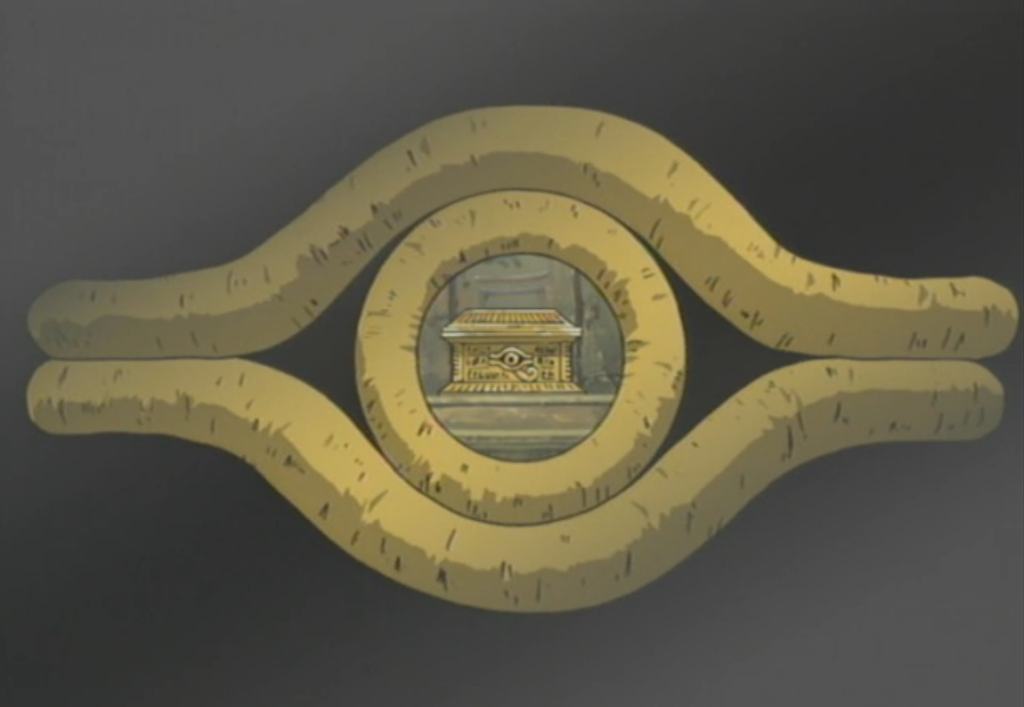
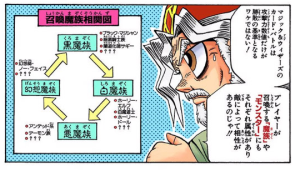

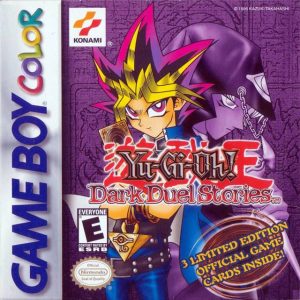

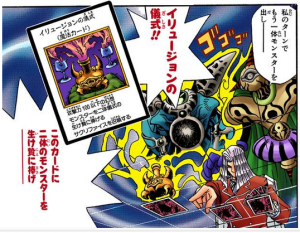
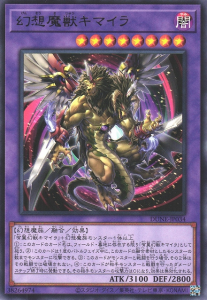
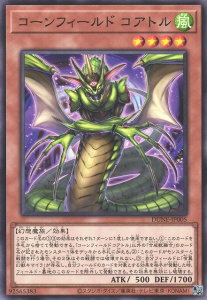
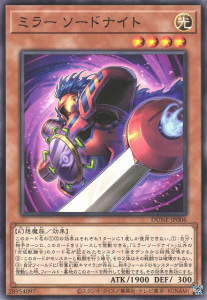
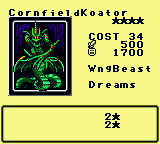

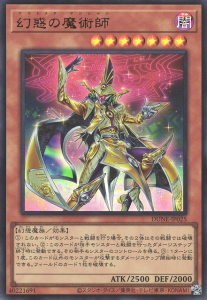
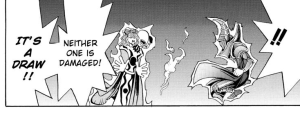
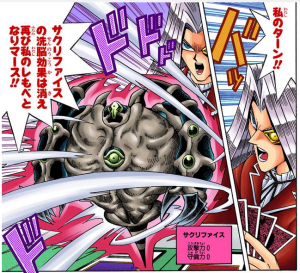
11 Comments
Very nice article!
Plus this could mean we get Shadow type Monsters at some point in the future. I’m all for it if it happens
As someone is already really digging the new type, thank you for such an amazing insight into its creation & what it represents!
When Illusionist-type was revealed, I knew that it must be based on cards used by Pegasus, but I definitely wouldn’t have known the exact origins of each aspect of the new monsters. Thanks so much for delving into the history of the game!
That was a great history lesson. Can’t wait to see what new archetypes we’ll get with Illusionist type monsters.
They will certainly reprint old monsters with new names, effects and artworks but with that new type. Like an “Illusionist Faceless Illusionist” (based on “Illusionist Faceless Mage”).
Great article, part of me wants the whole Relinquished series to be Errata’d as Illusionists for peak lore, but it would honestly be an unwarranted nerf, with the whole losing on the existing spellcaster support.
That and they can either weave in Illusionists into Relinquished or do something similar like they did with Chimera with new Illusionist bosses using the OG Relinquished set.
Concise and a great summary of the questions I had about the new type! Ty!
Great article!
That list from Reshef caught my eye, mostly because of Time Wizard lol. I think everyone’s expecting Pegasus will be getting new Illusionist support soon, but it’s nice to see Joey could be next as well.
I’m less irked because it’s a canon type just sad that there still isn’t an Air/Air Elemental type to go with WIND. Interesting that Jou had Mimic Illusionist aka Copycat in his deck that was changed to LIGHT for some reason. Bandai’s Chimera also creates illusions, hmm. Might also be noteworthy that none of Espa’s monsters were remade as psychics.